By: Lily McCarthy, 2024-2025 SPARCnet RaMP Mentee
POV: It’s December in upstate New York. The three layers that I have on are just barely enough to keep me from shivering – it’s not actually that cold, but I’m anemic and have poor circulation. Each Wednesday for the past four weeks, I’ve gone to the site of my SPARCnet plots to search for eastern red-backed salamanders (Plethodon cinereus). The plots are 5 by 10 meter arrays of 50 wooden boards, each board is 12 by 12 inches. These boards act as cover objects for the salamanders. When red-backs are on the surface, they prefer to stay under a cover object, like a log or rock, (as opposed to out in the open) for a few reasons: (1) if they stay in direct sunlight for too long they can desiccate, or dry-out, and (2) the microenvironment under the cover object is perfect for salamanders to thrive! The cover objects maintain ideal temperatures and levels of moisture for the salamanders. We know that red-backs use natural cover objects instinctively, which is why SPARCnet uses artificial cover boards, like the 12 by 12 inch pieces of lumber, for surveying. Salamanders can pretty consistently be found underneath them, hanging out on the surface.
The purpose of these winter surveys, and the reason I find myself outside on this mildly frigid day, is to answer questions about winter activity at my specific SPARCnet plots. Like other amphibians, salamanders are cold-blooded – unlike how humans shiver or sweat, salamanders use the outside environment to regulate their body temperature. It’s the reason why you see turtles and lizards sunbathing on rocks – they need to physically be in a warm spot in order to warm up, digest their food, and carry out other necessary life functions. In the summer, it’s too hot for red-backs to be on the surface; they risk drying out or overheating. On the flip side, the winter is too cold for red-backs since they don’t have the ability to prevent themselves from freezing, so they go underground where they can do the salamander-version of hibernation. For this reason, official SPARCnet sampling – where we methodically flip each of the 50 cover boards at a site and take note of all the salamanders we find underneath – happens during the fall and spring when we are most likely to find red-backs on the surface.
The winter surveys are also to get a sense of when salamanders start coming up to the surface in the spring for their active season. At what point do the majority of these red-backs go underground? When do we start seeing them come to the surface? Who are the individuals staying out longer than others? Apparently, on this December Wednesday, almost nobody. 200-odd cover boards come and gone, and the salamanders have made a meager showing.
That doesn’t stay true for long. This would be a very boring blog post otherwise. So here we go again! Another bend at the knees, another board lifted from the ground, but it’s a different story this time. Two salamanders. Under the same board. And they’re kissing!
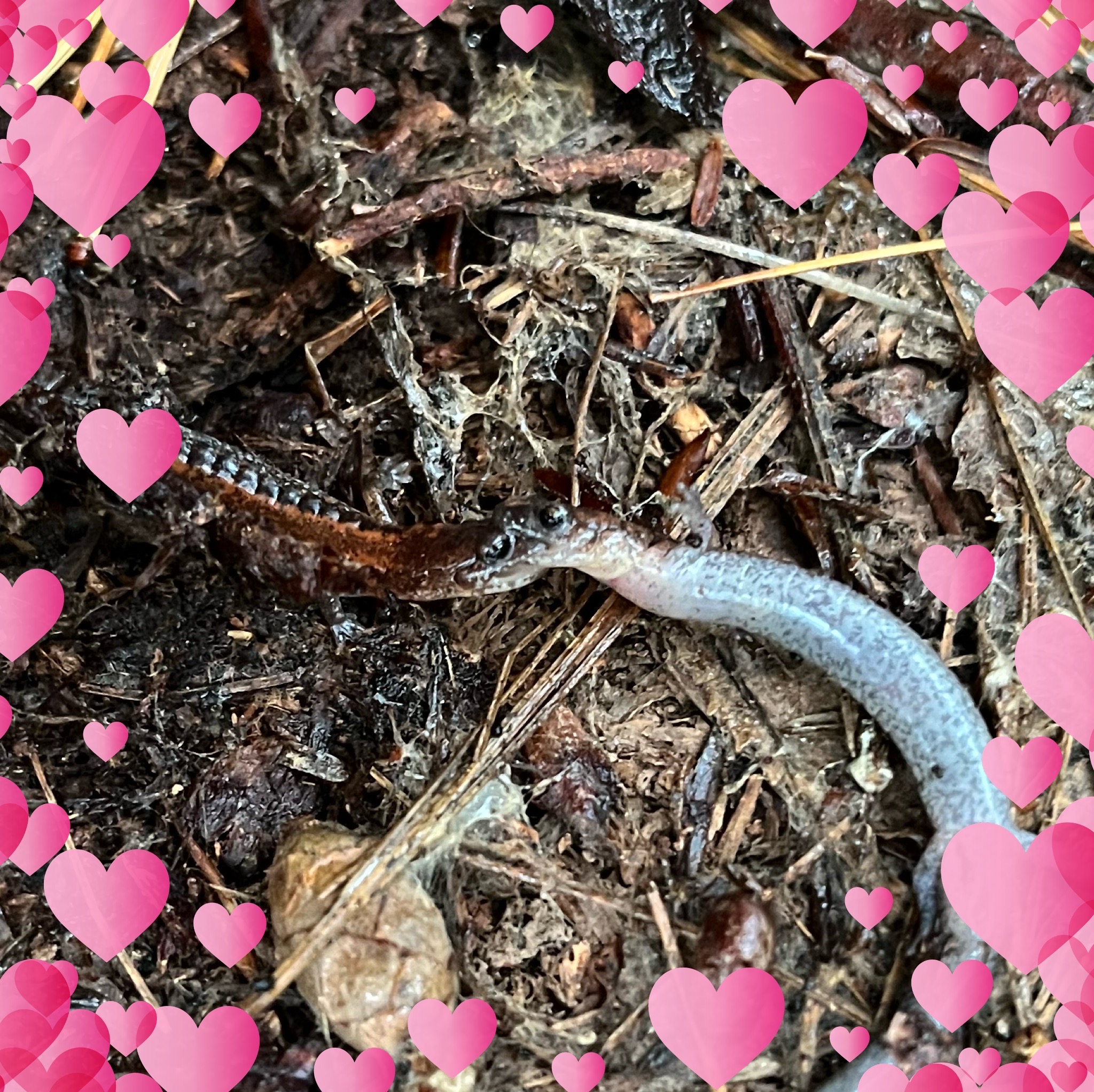
Did I… interrupt something? The answer is yes, I did. Just not what the human-equivalent might be. They’re not actually kissing – they’re in the middle of a territorial dispute. Remember how I said that cover boards provide comfortable environments for the salamanders? Well, they don’t really like to share that comfort with others. Red-backs are a territorial species1, meaning they choose a parcel of land to call their own and defend it from other red-backs. So when we set up SPARCnet plots, it doesn’t take long for salamanders to move in and claim cover boards. That is what was happening under this board. Not a sweet moment between two boyfriends, but a tense moment between two males in combat. Their mouths were locked and they seemed to be lying in wait for the other to make an offensive move. After a few seconds of stillness, they engaged in some kind of death roll, spinning at breakneck-speeds. While it was smaller and quieter than a crocodilian death roll, it was no less impressive.
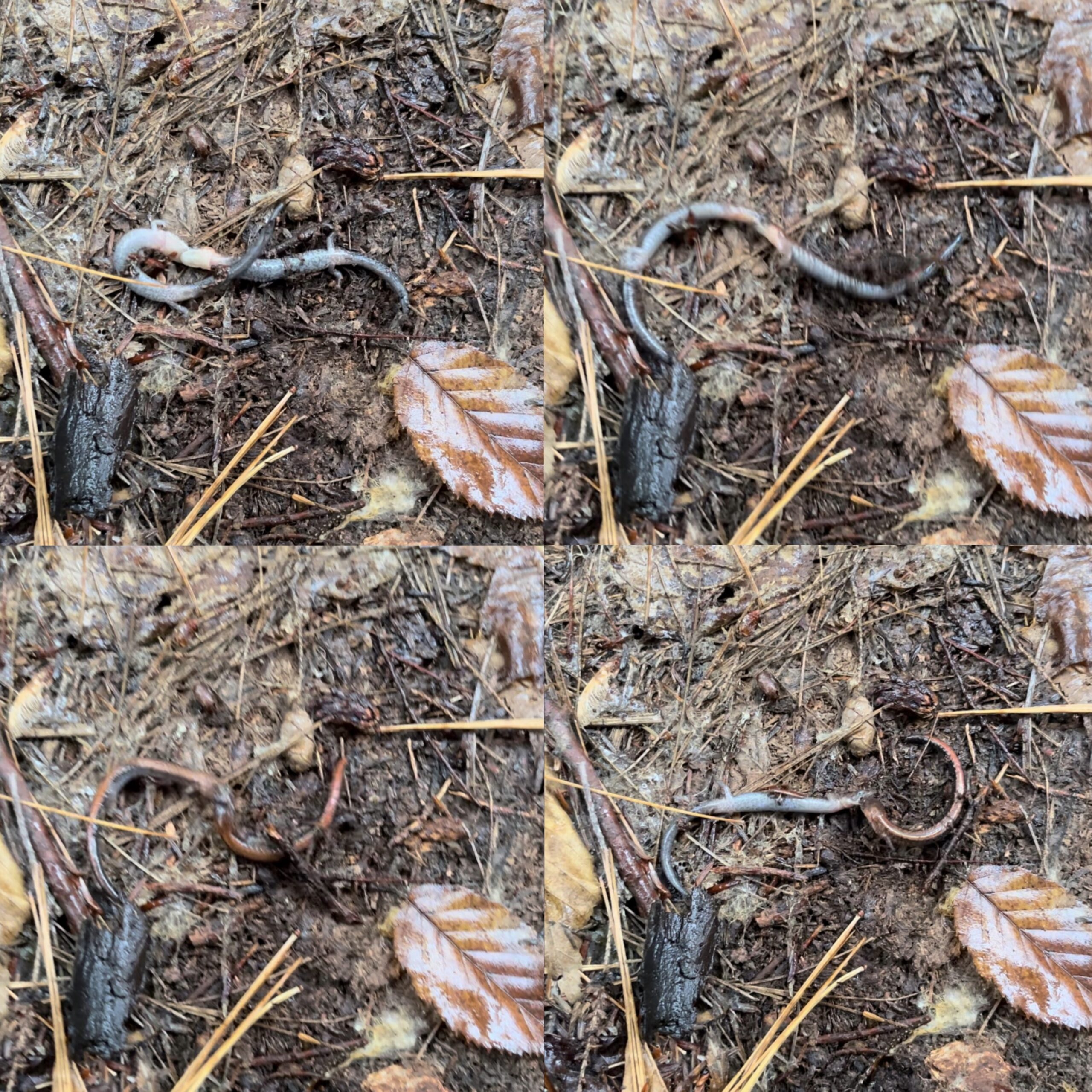
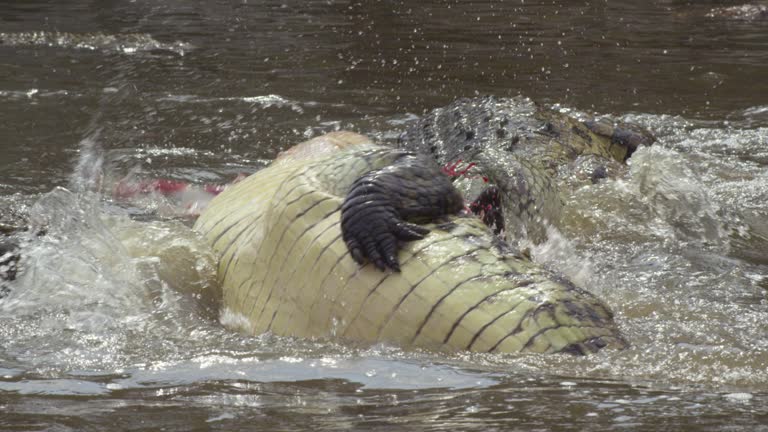
As well as being so impressive, it must have been exhausting; they called it quits right afterwards. They simultaneously walked to opposite edges of the square imprint left by the cover board, neither defeated nor triumphant. Or perhaps they were in the middle of their ten paces before the eventual turn-and-shoot. I can’t be sure, I didn’t ask. I took the physical separation as my cue, and used this opening to handle the salamanders. One of the males was tagged with colorful markings, and the other one had no marks. The presence of the colorful marks tells us that we have captured this salamander before. It makes me suspect that the salamander that we already found claimed the space underneath the board as his own, and the unmarked salamander wanted what the other had. Drama!
Even though they are territorial, it’s not uncommon to find multiple red-backs under the same board. We don’t know for sure why some salamanders share boards. One possible answer is that they are willing to share territory with their offspring for a short time or with potential mates. Sharing is caring, as the saying goes.
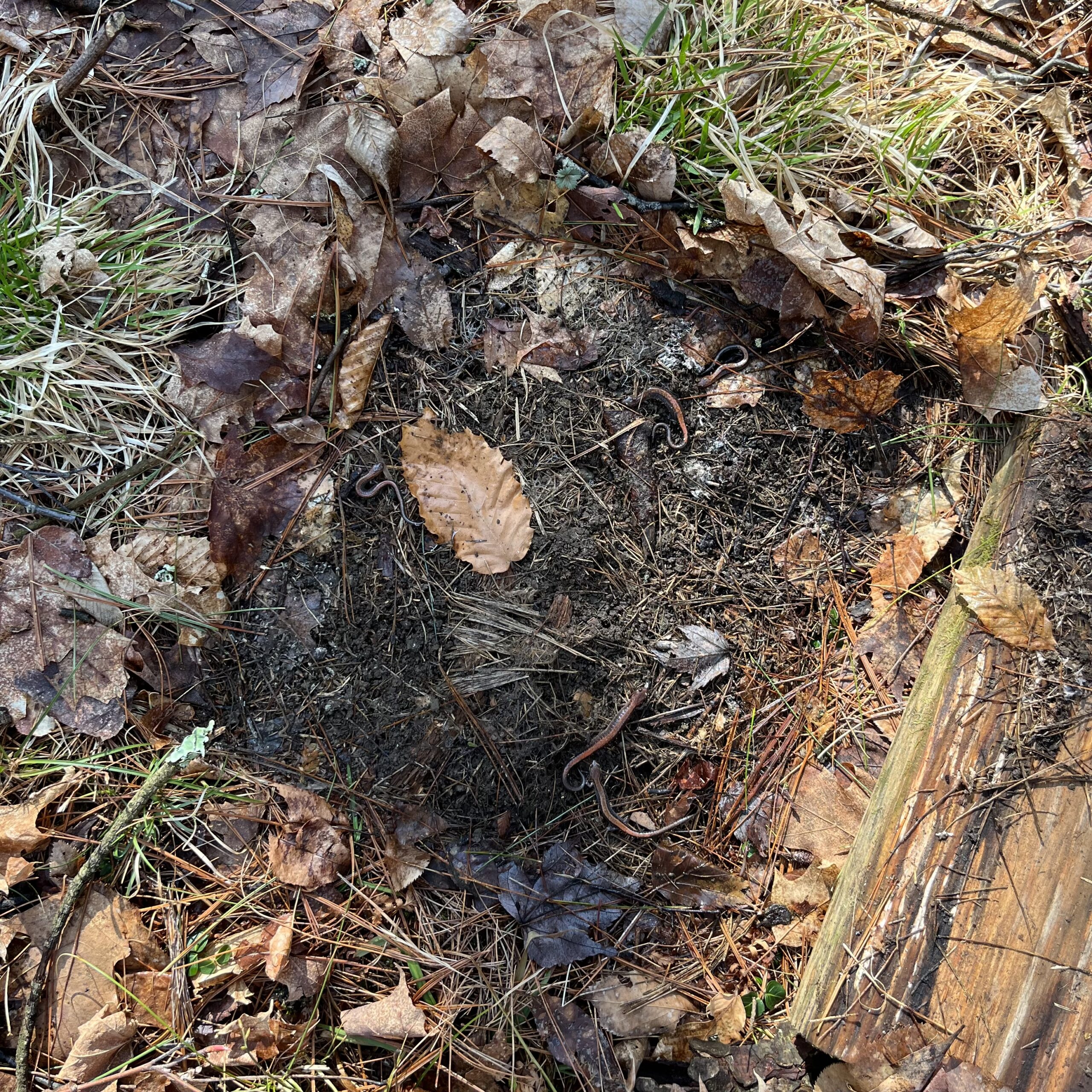
There is evidence that males defend territory that has high-quality resources so females will consider him as a mate2. It would increase their chances of successfully reproducing. Females are also territorial, especially once they lay their eggs. Bigger salamanders (both in length and in weight) are usually the most successful at defending their territory against smaller and younger individuals2. My two fighters were pretty similar in terms of size, which made for an entertaining wrestling match.
The moral of my tale? There’s entertainment right under your feet! The natural world has almost every love affair and action plotline that exists on the silver screen, except for the amnesia and evil twin tropes. Probably. The unmarked salamander could have been the other’s long-lost brother who decided he deserved the family property and was willing to get dirty, but there’s no research on that phenomenon in this species. So get out there! Flip a rock! Maybe even two! I just happened to be in the right place at the right time to observe something as interesting as two salamanders kissing fighting for territory. See what there is to see and discover what there is to discover. And most importantly: leave no trace. Go get ‘em, champ!
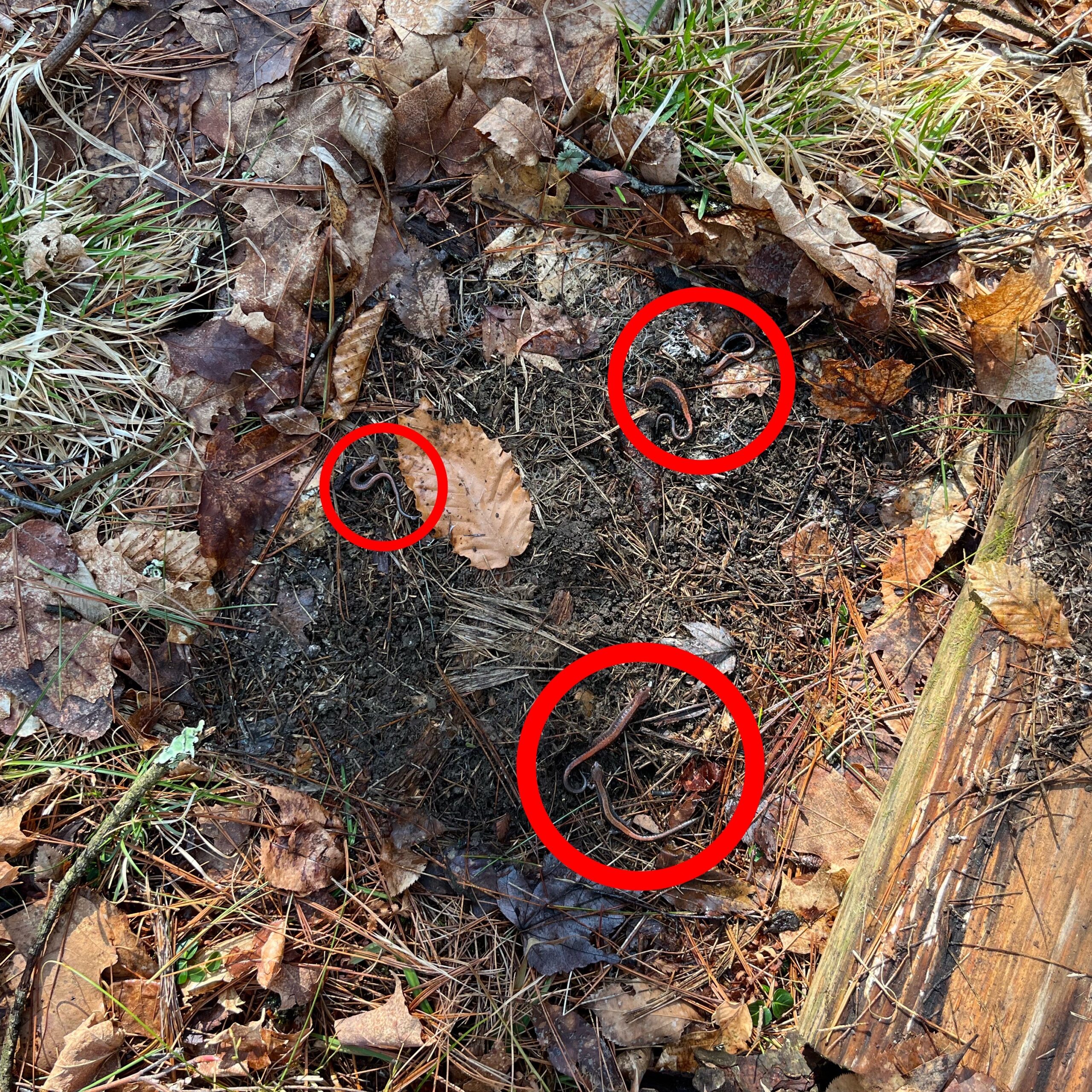
[1] Jaeger, R.G., Kalvarksy, D. & Shimizu, N. (1982). Territorial behaviour of the red-backed salamander: Expulsion of intruders. Animal Behavior, 30(2):490-496. https://doi.org/10.1016/S0003-3472(82)80061-4
[2] Mathis, A. (1991). Territories of male and female terrestrial salamanders: Costs, benefits, and intersexual spatial associations. Oecologia, 86(3):433-440. https://doi.org/10.1007/BF00317613
